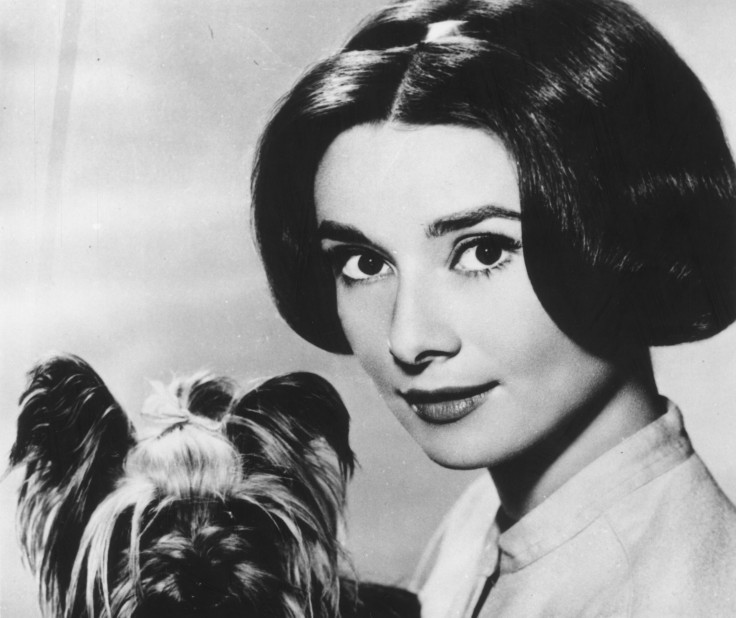3 Ways Audrey Hepburn Is Still A Cultural Icon For Feminism

In an age of over-photographed celebrities, Audrey Hepburn represents possibly the last of the generation of enigmatic icons. She broke the stereotype, carried style and class lightly, and influenced multiple generations of women across the world.
A major exhibition of images of Audrey Hepburn has opened at the National Portrait Gallery in London. Subtitled Portraits of an Icon, the show displays “classic and unseen” images of this most enduring of film stars. The portraits span her career from her early roles in West End chorus lines to the humanitarian work she did for UNICEF.
The cultural lives of iconic movie stars extend long after their deaths. Classic images of Marilyn Monroe, James Dean and other stars of the Hollywood studio era still circulate and are recognizable to generations born long after the stars have died. In the digital age, such opportunities are endlessly multiplied; the popularity of @oldpicsarchive on Twitter, for instance, demonstrates the high degree of interest in less well-known photographs of stars. Rare images of film icons are powerful because they seem to offer the possibility of seeing behind the well-known images which make up a star persona. The “unseen” photograph might enable us to catch glimpse the “real” person behind the star.
Audrey Hepburn pic.twitter.com/KDLqLjpo0t
— Old Pics Archive (@oldpicsarchive) July 3, 2015
All of this is true of Hepburn too. The enduring international fascination with her (especially marked in Japan) has been of a particular tenor. Her persona seemed authentic, producing the impression that the Audrey we knew was not just a construct of the Hollywood publicity machine, but also the “real” Audrey: that she actually was who she seemed to be.
This aspect of Hepburn’s image comes partly from the repeated emphasis on her enormous and artfully enhanced eyes in both her films and portraits. The way in which she is consistently framed, peering over or around things, looking directly into the lens of the camera, convinced us of both her innocence and honesty.
Contradictions and star appeal
In his classic account of film stardom, Richard Dyer noted that a key aspect of star appeal is the ability to hold together ideological contradictions. Marilyn Monroe’s ability to appear both innocent and profoundly sexy at the same time, is an example of this. It was Hepburn’s peculiar ability to resolve key contradictions of 1950s femininity, which made her a star who appealed especially to women in this period. She was a star in whose image “sexy” rarely played a part.
Hepburn managed, variously, to be both feminine and boyish, “natural” yet poised, different yet still acceptably feminine, across cultures and generations. While the fairytale femininities at the heart of her image were traditional – princess, ballerina, couture model – her inflection of them hinted at liberation and rebellion.
Redefining style and class
It was not especially acceptable for young women to wear trousers, or to wear black in the mid-1950s. The nibbled, elfin detail of her cropped hair was light years away from the coiffed shorter styles on older women which were visible in glossy magazines and on catwalks of the time.
Hepburn’s slender body was the polar opposite of the bombshell hourglass figures of Monroe, Loren and Mansfield. Hepburn’s look was redolent of Paris, of Beat culture, of a new generation and style. At the same time her poise, her voice, her manner, seemed to place her securely within an aristocratic class which was simultaneously old European and modern American.
A woman’s star for the ages
Her roles figured her as a “Daddy’s girl”, but she seemed to know her own mind. When I wrote my book on Hepburn, the women admirers who shared their thoughts with me often described her simultaneously as “classic” yet “kooky”, “natural” yet “perfectly put together”. They told me that hers was a look they could copy, one that could take them anywhere, a style which offered class, but with an edge. This was true for women who had first encountered her as teenagers in the 1950s and 60s, as well as for young women who came to Hepburn in the wake of her death in 1993.
Hepburn’s rise to international stardom anticipated the period of enormous cultural change that would characterize the later 1950s and 1960s. The combination of her perceived authenticity, acceptably different femininity and self-possession, spoke to a generation of young women who would go on to negotiate the changes brought by feminism. In the 1990s, it resonated for young women grappling with the “have it all” contradictions of post-feminism. Audrey Hepburn really was a woman’s star for the ages.
_Audrey Hepburn: Portraits of an Icon _is at the National Portrait Gallery, London, from 2 July to 18 October.
Rachel Moseley, Director, Centre for Television History, Heritage and Memory Research, University of Warwick, University of Warwick
This article was originally published on The Conversation. Read the original article.






















